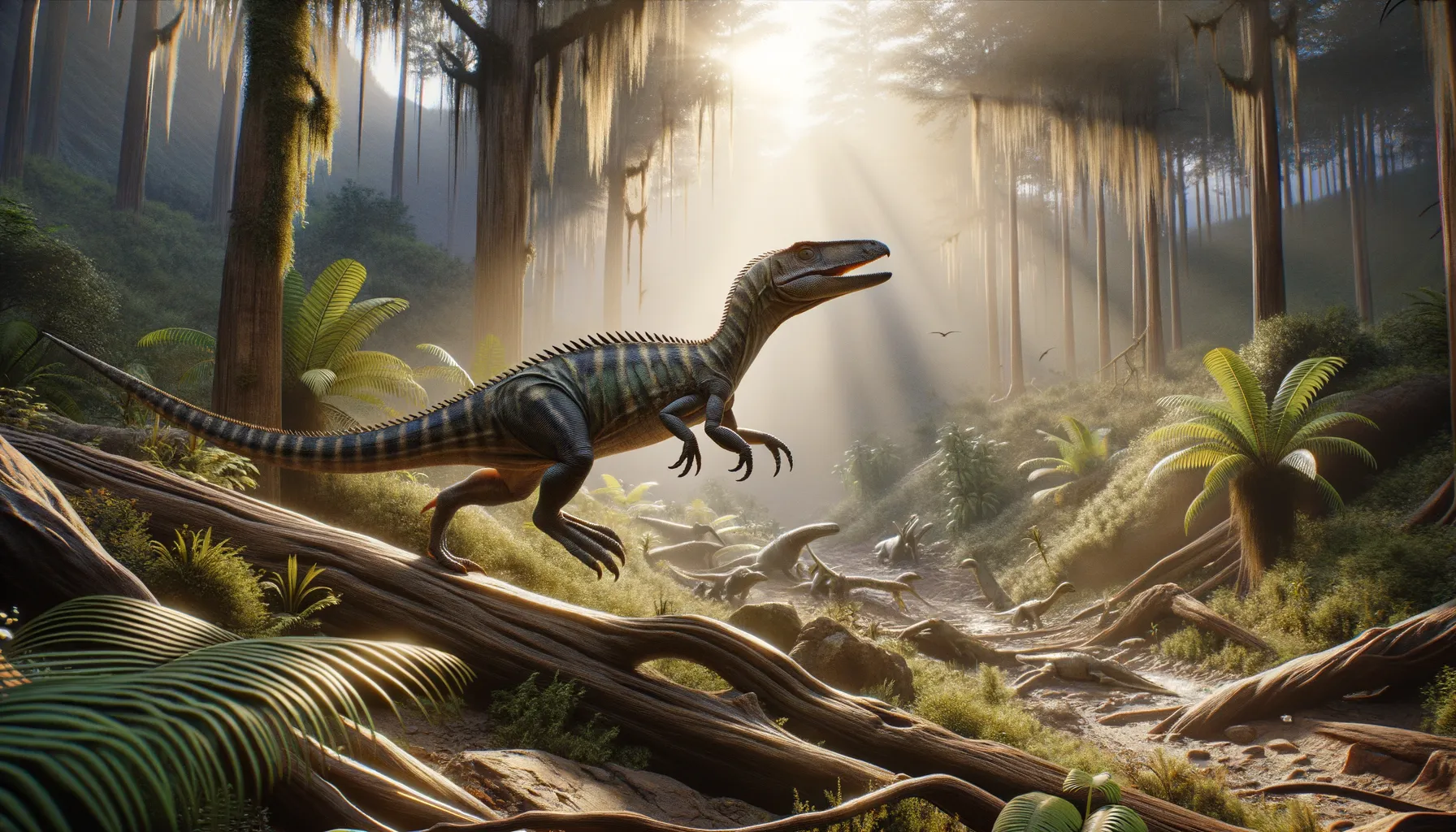
Gracilisuchus
The swift-limbed ancestor of crocodiles
Period
Triassic
Length
Roughly one meter in length.
Height
About half a meter tall at the shoulder.
Weight
Approximately 10 to 15 kilograms.
Gracilisuchus was a small, agile reptile from the Triassic period, thought to be an early ancestor to crocodiles. With lightweight limbs and a slender body, it was well-suited to a quick and active lifestyle. Its fossils were primarily discovered in South America, providing insights into the early archosaur evolution. Gracilisuchus is an excellent example of the varied and complex life that existed long before the age of dinosaurs.
Diet
Gracilisuchus was likely a carnivore, feeding on small animals and insects. Its sharp teeth and agile movement suggest it was an effective predator for its size.
Hunting
Gracilisuchus probably relied on its speed and agility to catch prey. It may have used stealth to approach and then burst into rapid motion to capture small animals or insects.
Environmental challenges
Living during the Triassic period, Gracilisuchus faced a rapidly changing environment with diverse and emerging ecosystems. It needed to adapt to shifts in climate and competition for resources with other early archosaur relatives. Natural selection would have played a critical role, ensuring only the most adaptable individuals survived.
Speed
Swift for its size, capable of quick movements.
Lifespan
Lived likely around 10 to 15 years.
First discovery
First discovered in Argentina in the 1970s.
Fun Facts
- Gracilisuchus was a small, agile reptile that lived approximately 230 million years ago during the Triassic period.
- Despite its name meaning 'graceful crocodile', Gracilisuchus was not actually a true crocodile but a close relative.
- This creature was about the size of a small dog, measuring around 1 meter long, which is about 3 feet.
- Gracilisuchus was likely a fast runner thanks to its slim and lightweight body structure.
- Fossils of Gracilisuchus have mostly been found in Argentina, giving us insights into the prehistoric wildlife of South America.
- It is believed to have been mostly a carnivore, preying on smaller animals and insects.
- Gracilisuchus is an important link in understanding the evolution from early reptiles to modern crocodiles.
Growth and Development
Like many reptiles, Gracilisuchus would have hatched from eggs and grown rapidly in its early years to reach maturity. Its growth rate likely varied based on environmental conditions, impacting its development and survival chances. Juveniles probably remained in more sheltered environments until they were large enough to fend for themselves.
Habitat
Gracilisuchus lived in a range of habitats that included riverbanks and lush forests. These environments provided ample hiding spots and feeding opportunities, crucial for its survival. Seasonal changes would have influenced its patterns of movement and resource availability.
Interaction with other species
Gracilisuchus interacted with a variety of other reptiles and early mammals that shared its environment. These interactions were likely driven by competition for food and resources. Predation pressure from larger predators would have necessitated quick responses and a good degree of territorial awareness.
Natural lifespan
In natural conditions, it lived about 10 to 15 years.
Reproduction
Gracilisuchus was oviparous, laying eggs like modern reptiles. Mating behaviors and nesting sites were likely dictated by the need for safety and proximity to resources. The survival of its offspring depended on the selection of safe, appropriately warm nesting environments.
Social behaviour
Gracilisuchus was likely solitary or lived in small groups. Competition might increase during mating seasons, but forming groups could aid in protection from predators. Social structures were possibly loose, primarily focused on survival rather than intricate social interactions.
Fossil locations
Fossils of Gracilisuchus have been predominantly found in South America, notably in Argentina. These discoveries have provided vital information about early archosaur evolution. The locality of these fossils indicates the regions where Gracilisuchus thrived and where paleontologists have been able to unearth parts of its history.
